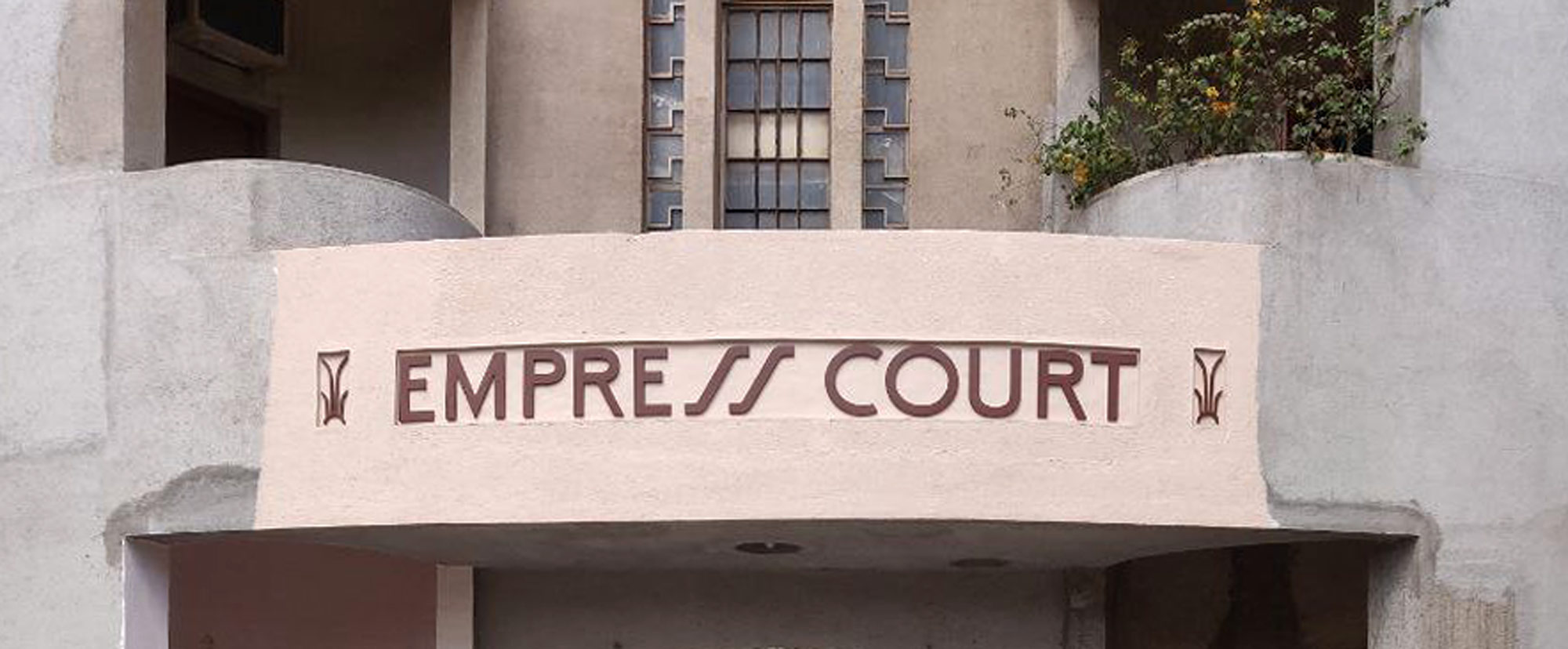Empress Court, a majestic Art Deco building constructed in 1936, lies along the Oval Maidan in Bombay’s first Art Deco precinct. Built on land reclamations starting in the 1920s, it is part of the 18 buildings situated in this historic precinct, and holds pride of place as a street corner building. It is a prominent part of the Victorian Gothic and Art Deco Ensembles of Mumbai, a UNESCO World Heritage Site. The Art Deco buildings of Oval Maidan were constructed between 1935 and 1940, and have, for the most part, retained their original character, design and essence. Empress Court is no exception.
In September 2022, the Hector Mehta family, residents of several flats in Empress Court, approached Art Deco Mumbai Trust for advice on recreating and restoring the building’s lettering to its original form. The following report documents the team’s process and observations. This project also offers an example of small-scale interventions that can help preserve, restore and revive the built form’s architectural and aesthetic integrity in cost-effective ways.
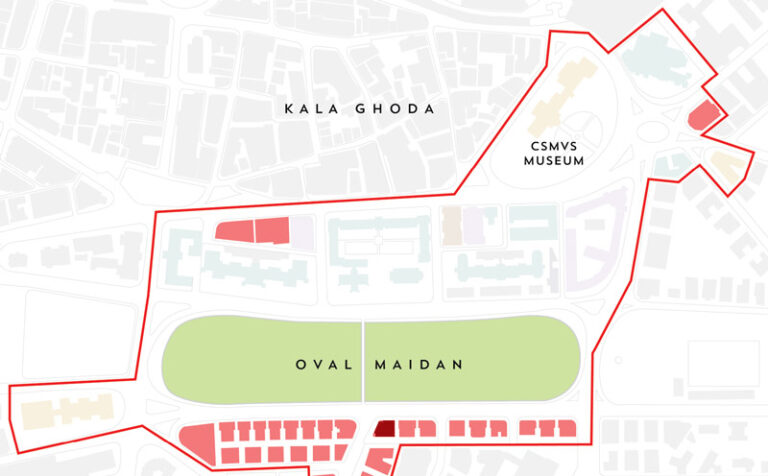
HISTORICAL BACKGROUND – Setting the Stage
Empress Court was designed by Architects Contractor & Kanga, and Gajanan B. Mhatre. It has a Reinforced Cement Concrete (RCC) frame construction with 9-inch walls.[1] The construction work was carried out by Messrs. Surveyor & Co. while the colour-crete and exterior plaster was done by Messrs. Simplex Concrete Works & Construction Co.[2]Notably, even 87 years after its original construction, save for the addition of a floor, modification of the turrets (which were combined to form a single structure), and alteration of the original lettering, Empress Court retains most of its authentic features. This has been possible due to the sensitivity of the owner and residents.
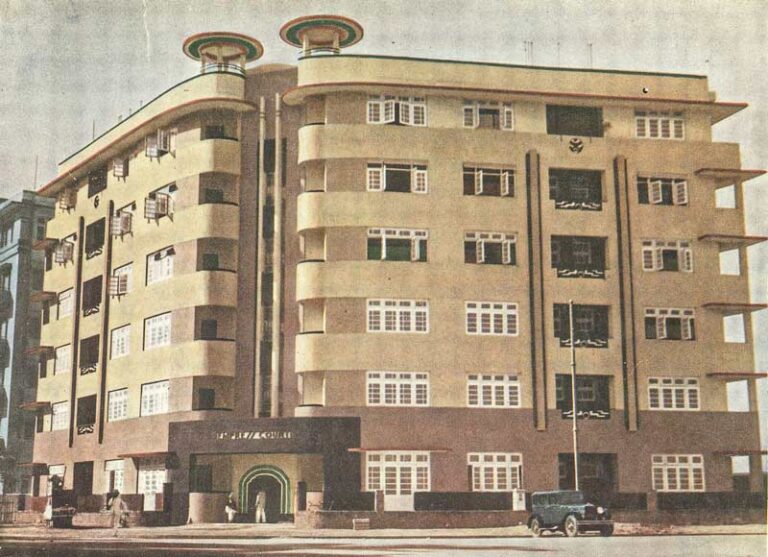
SCOPE OF WORK – What We Set Out To Do
At the time of their construction, each building along the Oval Maidan was expected to follow common parameters regarding uniform height, setback, compound wall, etc. Even so, these buildings expressed a unique identity through their design and naming conventions. The lettering on the building facade is part of this unique identity, with each building sporting its name in various materials and styles. Although it is a small component on the building’s facade, it forms an intrinsic part of its character.
At Empress Court, the original lettering had been replaced during earlier MHADA (Maharashtra Housing and Area Development Authority) repairs in the 1990s. The Client understood the significance of the original lettering as a character-defining feature, and wished to have it reinstated. Art Deco Mumbai Trust (hereon, referred to as the Conservation Team) was enlisted to oversee the project, the design of the lettering, its production and installation.
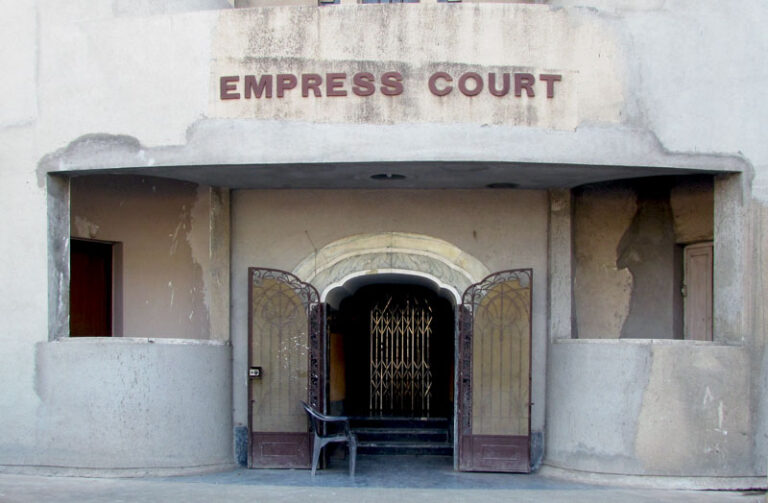
PROCESS OF RECREATING THE LETTERING – A Step by Step Account
Through archival images, the Conservation Team deciphered that the original lettering was possibly cast in concrete and placed within a 1-2 inches deep recess on the entrance canopy. It was of a simple Deco font, with the exception of the slanting ‘S’ in ‘Empress’.
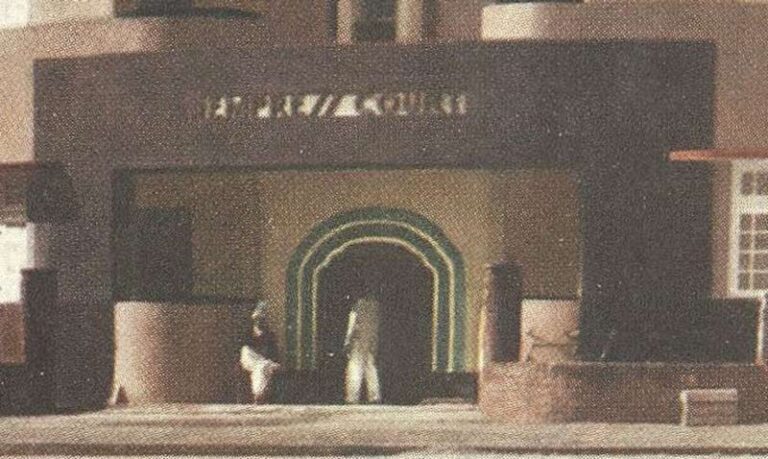
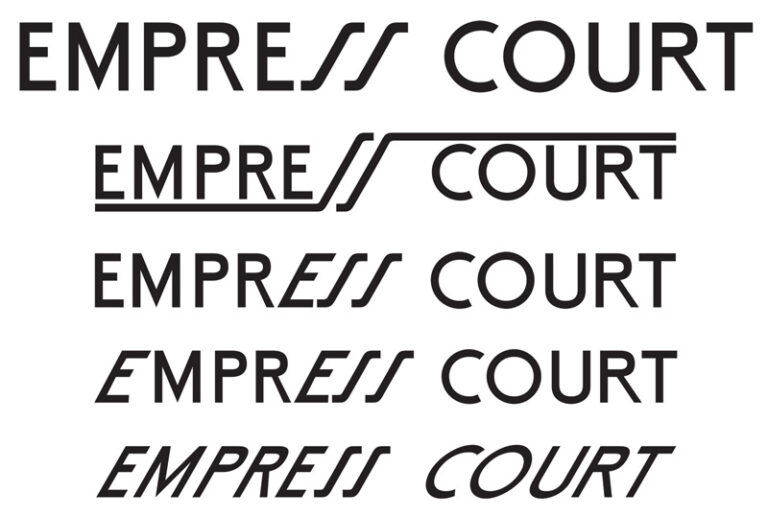
The Conservation Team created a measured drawing of the entrance canopy, with the recess positioned centrally. Type Designer Tanya George helped create multiple variations of the lettering font and composition, with proper ratio.
Another archival image provided a better understanding of the lettering’s font and placement. It also showed two additional rectangular recesses on either side of the lettering, within which a motif had been placed. This motif appeared to be two slanting lines, but was unclear when zoomed in (see box in red in Figure 6).
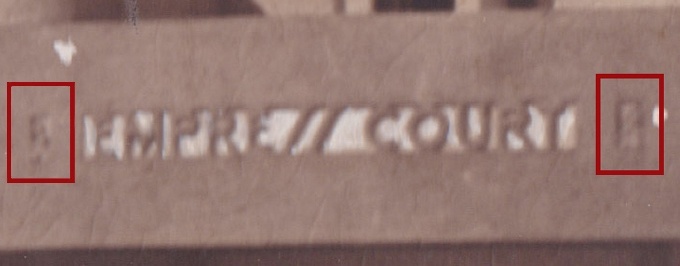
To recreate the motifs, the Conservation Team drew from elements in the original grille designs on the balcony and compound wall, which are harmonious with each other and follow a common design language across the property. This was a conscious attempt to produce a design which ties various original elements in the building together, a concept pioneered by Mhatre (architect for Empress Court).
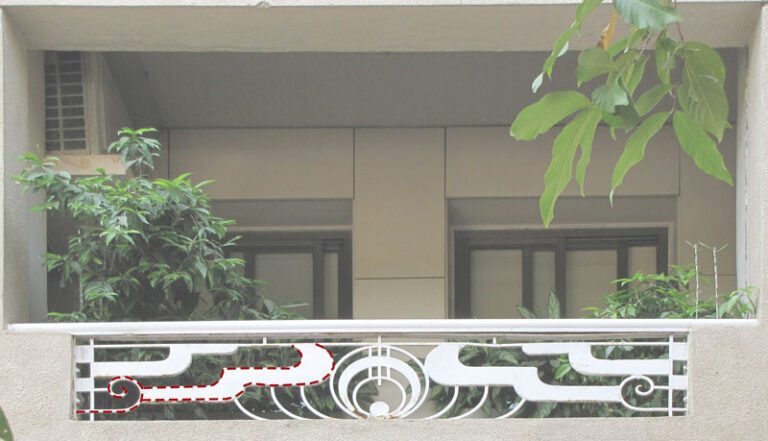
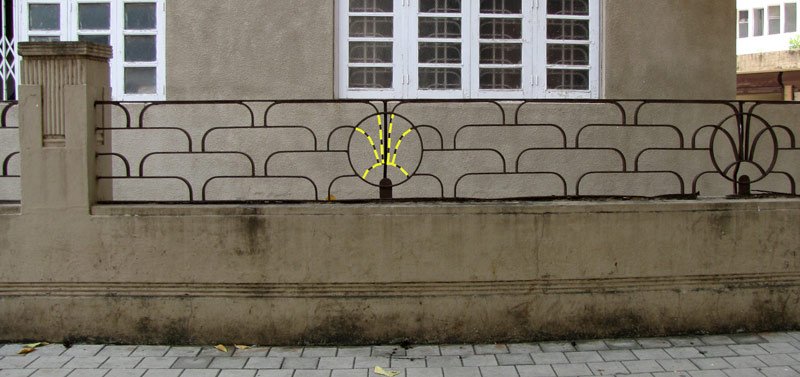
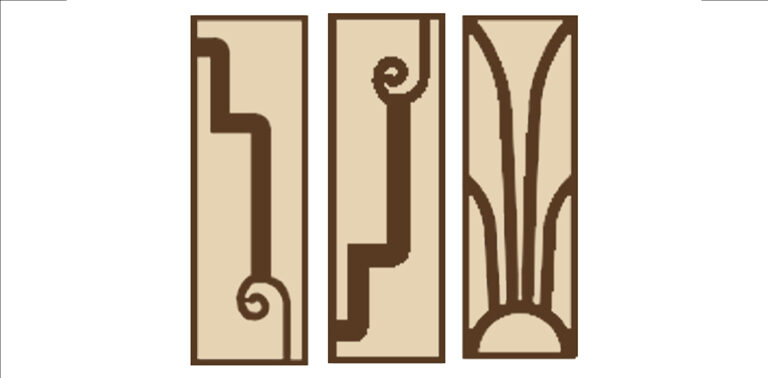
Of the three design options prepared, the Client chose the third (on the right in Figure 9), along with Tanya’s iteration of the original lettering. The selected motif design represents a sunburst, a symbolic feature common across Art Deco styles internationally. The Conservation Team then prepared a measured drawing, which showed:
- the dimensions of all three recesses
- placement of the lettering and motifs
- offset of the lettering from the recess lines
- distance between the three recesses
- the overall placement on the canopy
The materials in consideration were stucco, wood, metal and acrylic, in response to factors like resilience against local weather conditions, longevity, aesthetics and cost effectiveness. It appeared that stucco would not provide a sharp, finished look; while wood was unsuitable for Mumbai’s humid weather conditions. Acrylic and metal were shortlisted, from which the Client chose stainless steel, to be painted in a dark brown shade.
MATERIAL DESCRIPTION AND SPECIFICATIONS – The Technical Details
The Conservation Team provided the following specifications to the fabricator, to ensure quality of the material in the final outcome:
18 swg SS 304 grade 0.5” depth 3D Letters with PU coating as per colour shade.
“EMPRESS COURT” Letter ht. 15” with motif designs of the same height on either side.
-
- chemical composition (minimum of 17-20% chromium and 8-10% nickel, combined with a maximum of 0.07% carbon. It is defined as a Chromium–Nickel austenitic alloy)[5]
- mechanical properties
- weldability
- corrosion/oxidation resistance
- deep drawing quality (to process it into sheets)
- strength
- ease of cleaning and fabrication
FABRICATION AND ASSEMBLY – An Archival Image Come to Life
The lettering and motif design was laser cut using a 1:1 measured drawing. This ensured maximum precision. The measured drawing also later doubled as a stencil on site.

On the rear side of the letters – which was left open – the fabricator installed small pockets, into which the dowel would be screwed and gently pushed into the canopy for secure installation. Once fully assembled, the fabrications were PU coated in the shade Nut Brown N-0419 from Asian Paints. With this, the assembled letters and motifs were ready for installation.
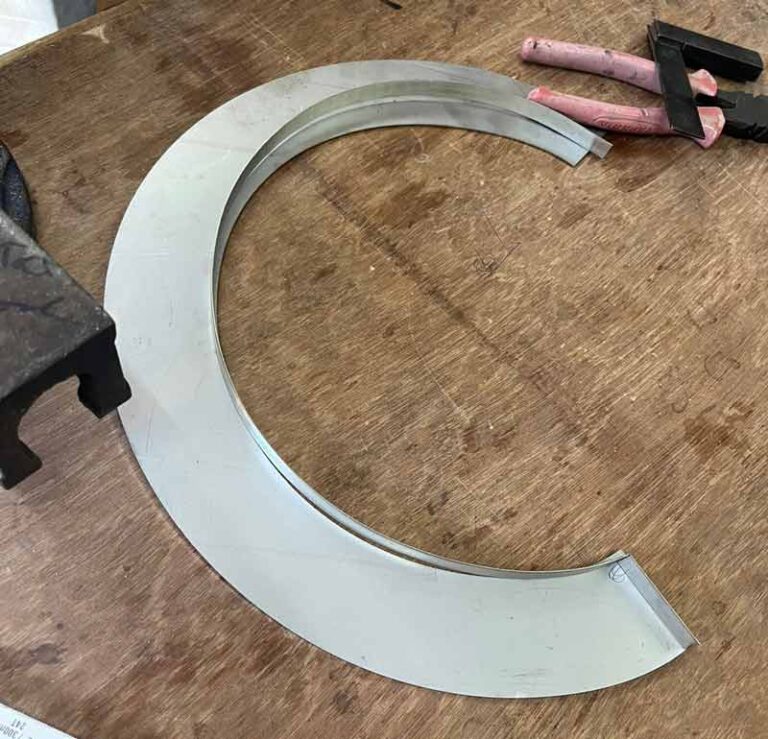
PREPARING THE RECESSES – Setting the Arena
On site, the old plaster was broken to create three recesses – one for the lettering and two for the motifs on either side. They were treated with a polymer plaster to achieve a smooth and even surface. The recesses were painted with a base shade matching the original colour palette.
The Conservation Team closely monitored the entire process to ensure the placement, alignment, sizing and quality of the work was in accordance with the instructions provided.
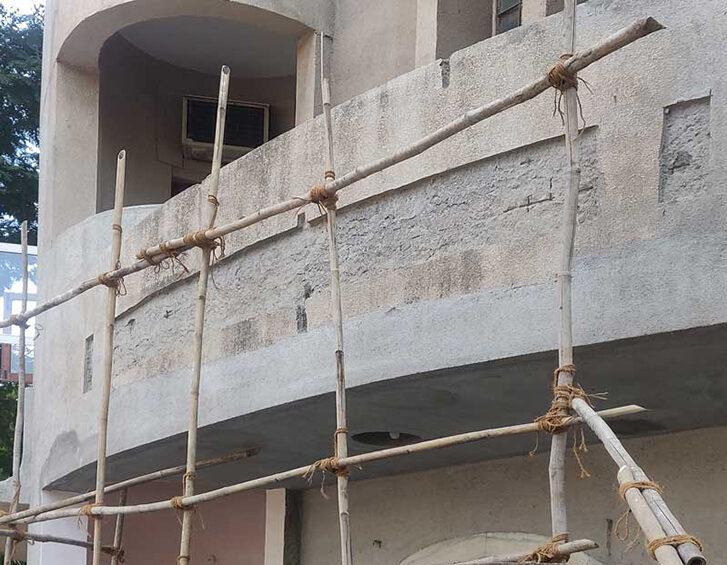
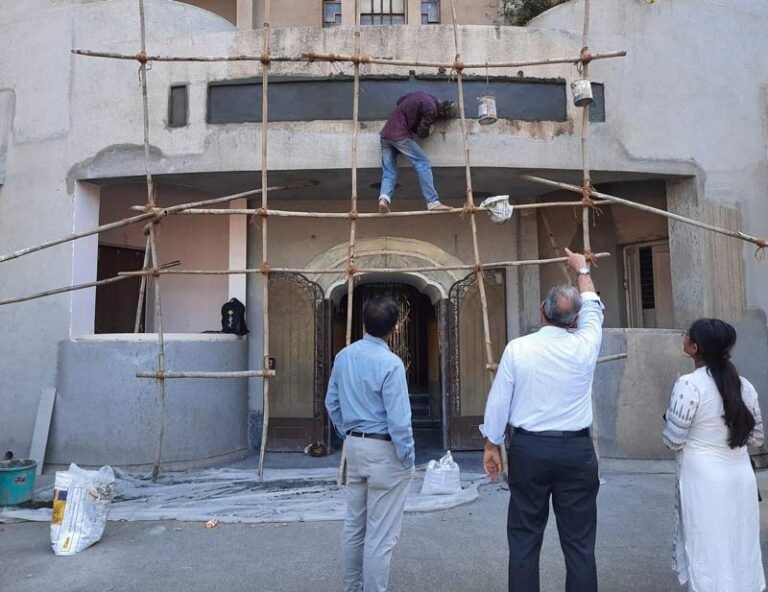
MOUNTING – The Old Spirit in New Packaging
On 31 May 2023, the lettering and motifs were mounted. At the Conservation Team’s final inspection the metal fabrications were found to be lightweight, with a smooth finish and even surface. A 1:1 scale drawing was placed into the recesses. This drawing comprised the lettering and motifs with accurate markings to match the screw placement.
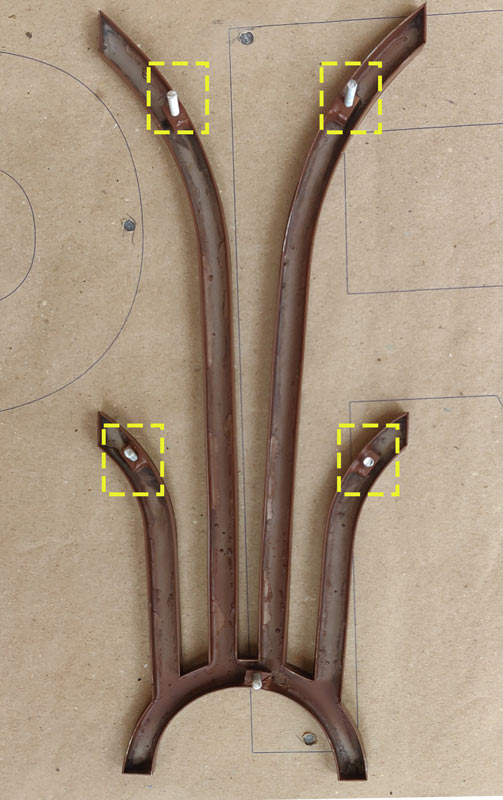
Lastly, the letters and motifs were fixed onto the canopy by gently pushing the dowels into the drilled holes. Working backwards from the letter ‘T’ of “Empress Court”, each letter was carefully installed, and cleaned with a dry cloth. The second ‘S’ of “Empress” was mounted last, as it overlapped with the curved portion of the canopy, making its installation challenging. The motifs were similarly installed by pushing the dowels into the canopy.
Finally, Empress Court, Oval Maidan had a brand new signage that displayed its name as originally intended.
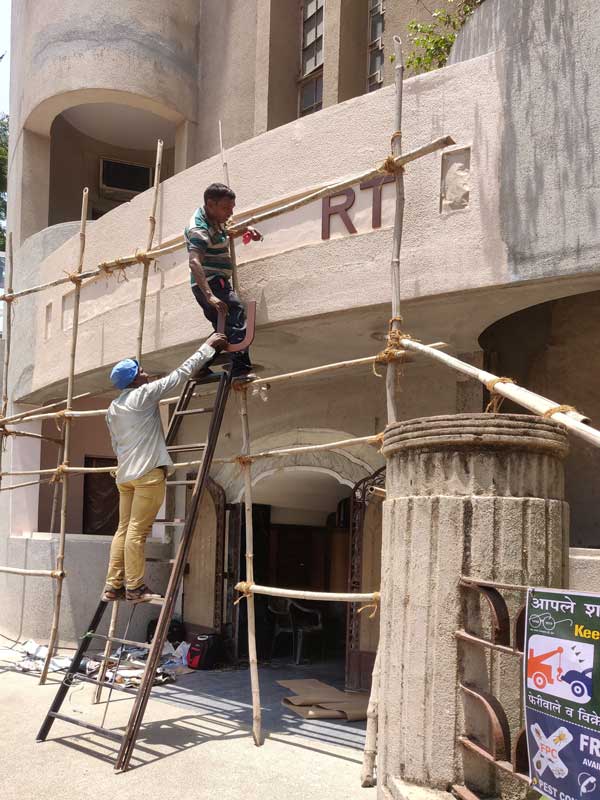
CONCLUSION – A Significant Impact on a Small Budget
This project is a unique stakeholder-led initiative. At a time when most original signages in the city are being traded in for more contemporary styles and standardised fonts, the Client has made a concerted effort to ensure the building name is displayed in its original form, even if it meant using contemporary materials and technology.
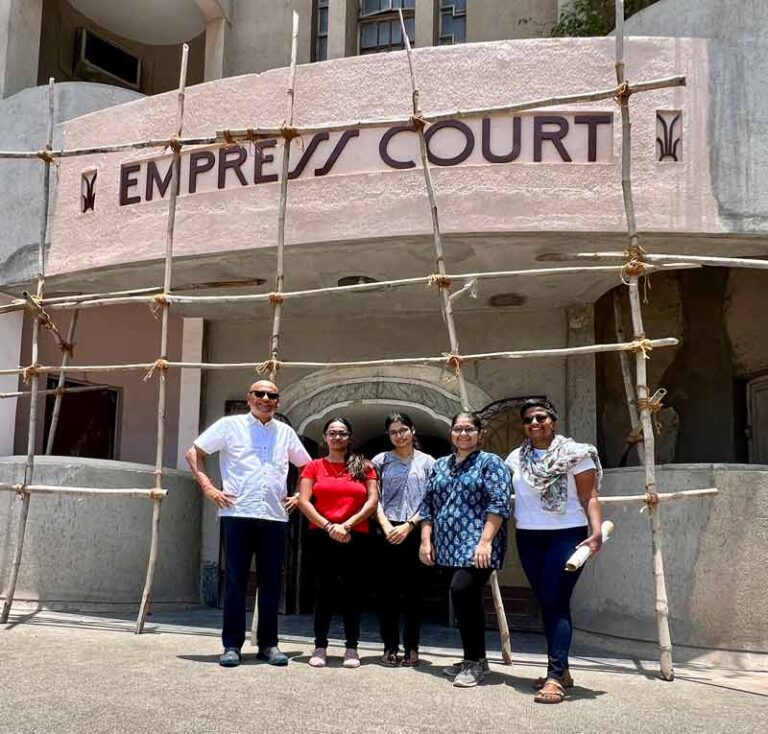
With the recreated lettering, the building’s character has been enhanced, adding greater value to its historicity. Once the building is repaired and painted (following the original colour palette), systematically highlighting all its Art Deco features, it will exhibit a comprehensive aesthetic. Though historic, Empress Court is also a building that continues to be lived in, and must evolve with the contemporary needs of its residents. This project is an example of ways in which residents can preserve and restore the authenticity of their properties, in a sensitive and economical manner.
The lettering may be a small aspect of the building’s overall aesthetic, but it is intrinsic to its character. It is also an element that influences how one perceives the architecture, design quality and aesthetic of the building. Recognising this, the Conservation Team oversaw the design, specification, fabrication and installation of the recreated lettering, with an effort to maintain visual harmony with the rest of the facade. While the building is located within an important UNESCO precinct, Mumbai boasts of several other such properties that merit similar care and could be sensitively treated – even if it means restoring only the lettering or other small elements. The repair, restoration and maintenance of modern heritage need not entail substantial interventions. Through innovation in thought and improvisations, there are efficient and cost-effective solutions available.
Read about another conservation project by Art Deco Mumbai Trust, The Repair & Restoration of Swastik Court, Oval Maidan.
Simran P. Mhatre for Art Deco Mumbai
An architect with a Masters in Urban Conservation, Simran believes that heritage and culture are our touchstones, our points of reference, and the foundation of our existence. At Art Deco Mumbai, she does documentation and also oversees repair, restoration and conservation.

